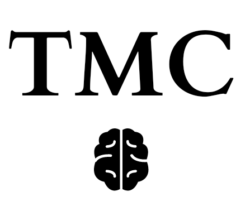“Creativity is intelligence having fun.” – Albert Einstein
Practising visualisation can help you achieve exactly what you want in life without actually having to physically practise. Not only does it expand your creativity, it also prepares you for the goals you are seeking.
Let’s begin with a classic example of the power of visualisation.
During the Cold War, the Russian human rights activist, Natan Sharansky, was accused of spying for the US government. He was given a nine-year prison sentence in the former Soviet Union. Much of it spent in solitary confinement in Siberia.
As a child, Sharansky had been a chess prodigy becoming a champion of his native Ukrainian town of Donetsk. In his lonely, dark cell, forbidden to read or write. Sharansky decided to visualise chess games in his head. Playing on both sides, moving black and white pieces. When asked what was he doing by his captors on several occasions he is quoted as saying,
“Don’t disturb me, I’m playing chess.”
Given that his jailers could see no chess board or pieces and there was no chair or table. They were increasingly convinced that he was psychologically unstable. But it was the visualisation of chess matches (and dreaming of becoming a world champion) that kept him sane and probably improved his game. As Sharansky later said, “I played thousands of games – I won them all.”
Indeed in 1996, Sharansky (at the time, Minister of Trade in the Israeli Government) went on to beat the then world chess champion, Garry Kasparov, in a simultaneous competition.Most of us are unlikely to be as focussed as Natan Sharansky, but the art of mental visualisation is something that everyone can benefit from, regardless of your situation and capabilities.
Neuroscientists have found that our thoughts produce the same mental commands as our actual physical actions making visualisation even more significant.
Use your imagination
Our imagination impacts many of the cognitive processes in the brain. Our motor control, attention, perception, planning, and memory. This means that the brain is learning and training for actual performance during visualisation. Not only can visualisation improve and enhance your thinking, it also has the effect of rewiring the brain and improving mental health.
A research study on brain activity in weightlifters found that the brain patterns involved in actually lifting weights was very similar to when they just visualised or imagined lifting. The research demonstrated and confirmed that practising mental visualisation is just as effective as actual physical practice (Source: Guang Yue 2004).
The finger adduction test
Guang Yue, a psychologist from the USA, made a comparison between a group of people where one group performed weight exercises. A similar group followed a regimen, of mental visual exercise over a period of 12 weeks. His results found that there was an increase of a 53% in muscle strength in the group who had performed physical exercise. The group that practised mental visualisation or virtual weight exercises also increased muscle strength by 35%. This result confirms that combining both visual and physical exercises would give improved results.
It’s becoming clear that visualisation, whether used by chess players, athletes or others, can enhance performance. The studies show the power of the mind-body connection and how our thoughts determine our behaviour. This is a key factor in achieving improved mental well-being. Our psychology is fundamental to our achievement and to the success we obtain through our endeavours’.
Professional athletes use visualisation
Visualisation is now considered a central part of any professional athlete’s training. Those that have used this technique to rise to the top of their sports include footballer Wayne Rooney, rugby player Jonny Wilkinson, athlete Jessica Ennis-Hill.
Professional athletes use detailed internal imagery. They replay their performances including all aspects of how they felt and reacted.
A frequently quoted example is Jack Nicklaus, former world champion golfer, who said: “I never hit a shot, not even in practice, without having a very sharp in-focus picture of it in my head”.
Muhammad Ali, used mental rehearsal and practise to enhance his performance in the ring. His technique included affirmation, visualisation, mental rehearsal and self-confirmation. His confidence was reflected in his repeated affirmation, “I am the greatest”.

